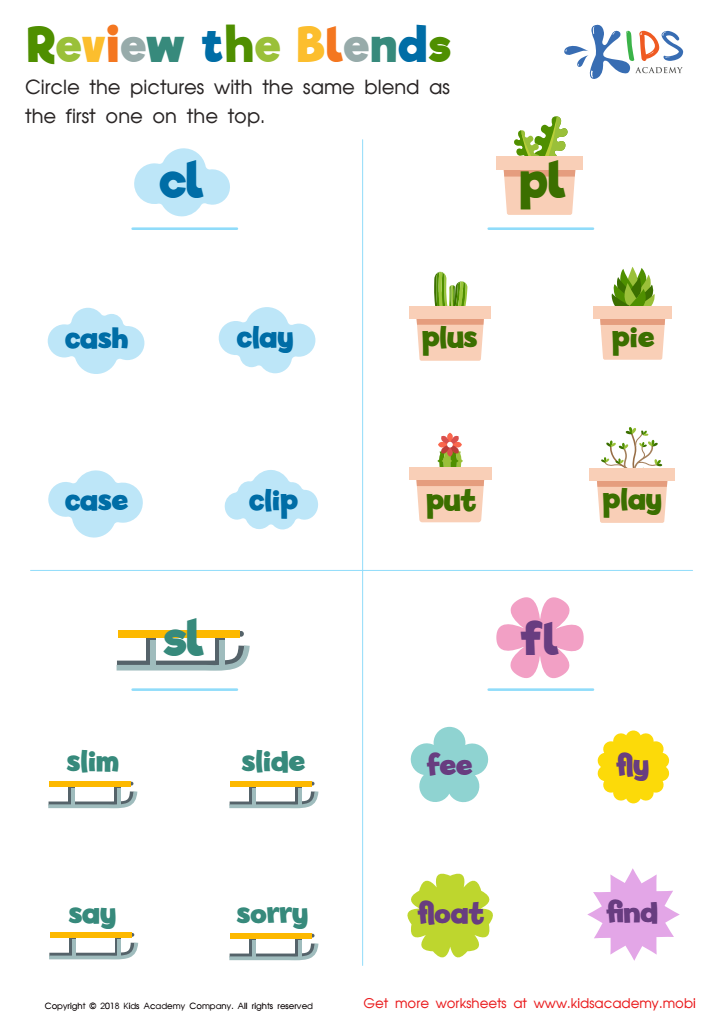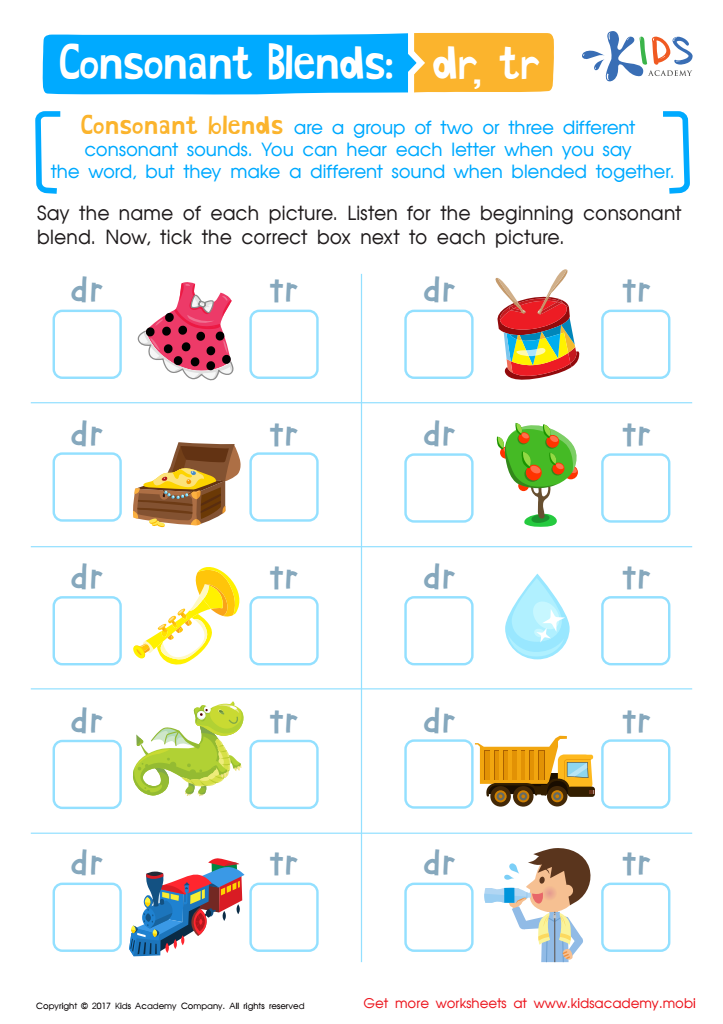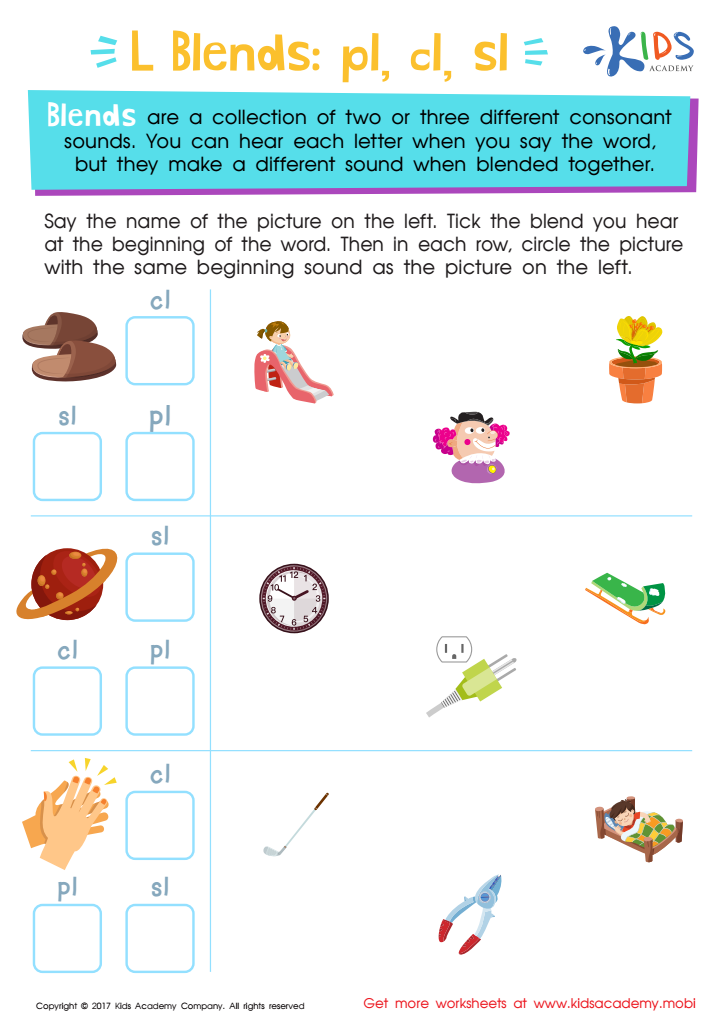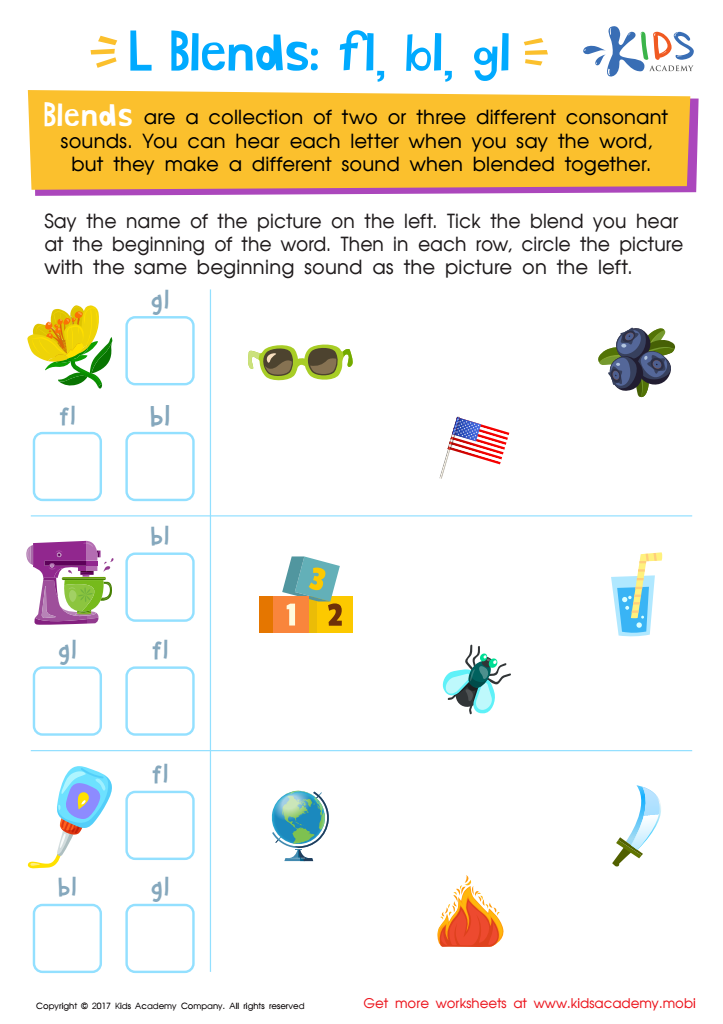Normal Initial and Final Consonant Blends Worksheets for Ages 3-7
4 filtered results
-
From - To
Introducing our "Normal Initial and Final Consonant Blends Worksheets" designed for children aged 3-7! These engaging and educational worksheets help young learners master the basics of consonant blends. By focusing on both initial and final blends, kids can develop crucial reading and pronunciation skills in an enjoyable way. Perfect for early learners, each worksheet combines fun activities with targeted practice to build a strong foundation in phonics. Whether used in the classroom or at home, these worksheets aim to make learning a joyful and rewarding experience. Give your child a head start in reading with our expertly crafted resources!


Review the Blends Worksheet


Consonant Blends: "Dr" and "Tr" Printable


L Blends: "Pl", "Cl" and "Sl" Printable


Blending Consonants: "Fl", "Bl" and "Gl" Printable
Normal Initial and Final Consonant Blends are crucial building blocks in early literacy development for children ages 3-7. These blends, such as "bl," "st," "nd," and "sk," combine two or more consonants where each retains its sound. Understanding these blends significantly enhances phonemic awareness—a critical skill for reading proficiency.
For parents and teachers, focusing on these blends helps young learners decode words more efficiently, facilitating smoother reading experiences. Recognizing and pronouncing blends supports vocabulary expansion and the ability to sound out new or similar words. For example, knowing that “br” sounds the same in "bat" and "broom" creates a foundation for understanding patterns in word construction.
Moreover, mastering consonant blends positively impacts spelling skills. Children who are adept at blends are more likely to write words accurately, nurturing their writing capabilities early on. This also eases the transition from novice to fluent reader, preventing struggles that can arise from inadequate phonics instruction.
In addition, early success in blending consonants fosters confidence and a love for reading. Enthusiastic readers are more likely to explore books, discovering diverse topics and strengthening comprehension. Thus, emphasizing Normal Initial and Final Consonant Blends gives children a head-start in their academic enthusiasm and achievements by providing them with the tools needed for effective communication and literacy.

 Assign to the classroom
Assign to the classroom






